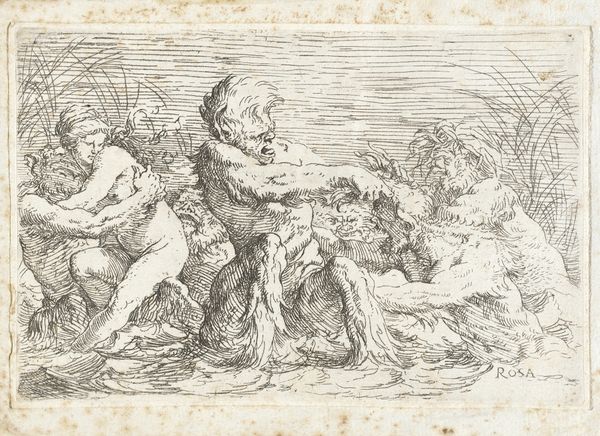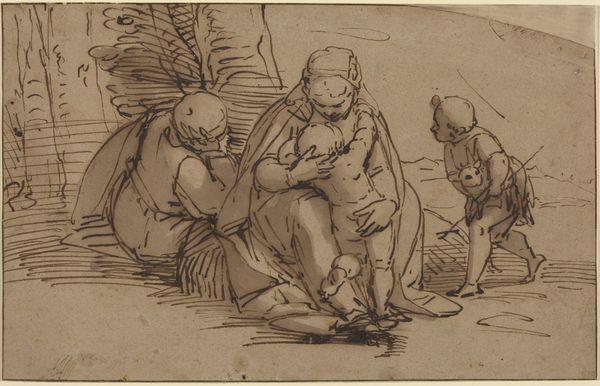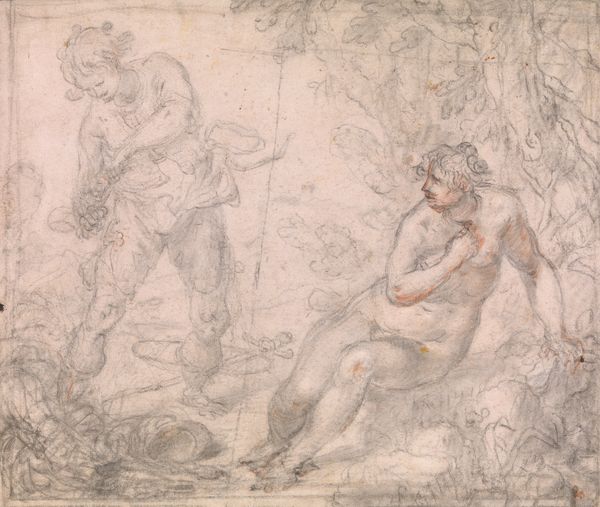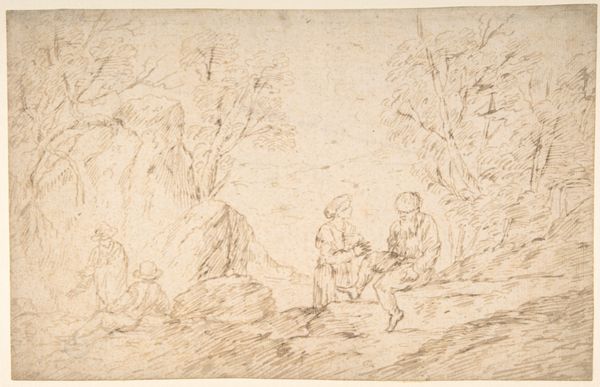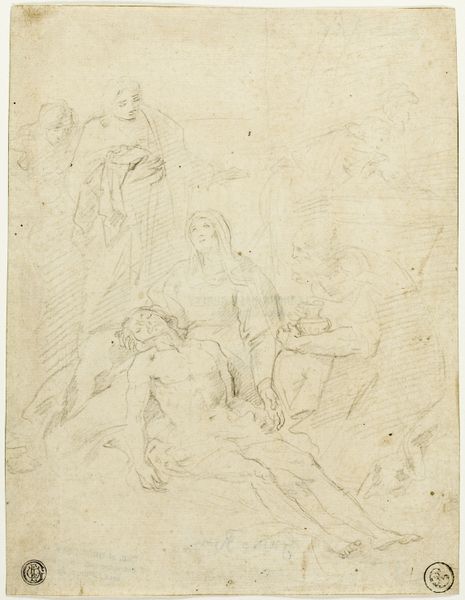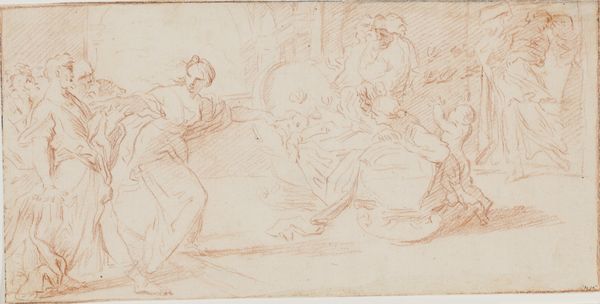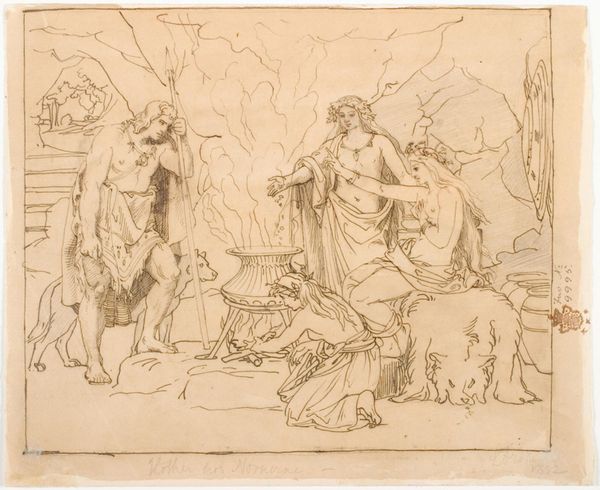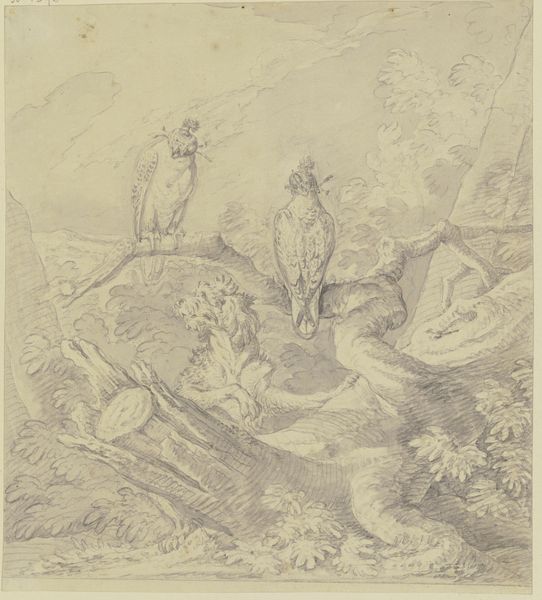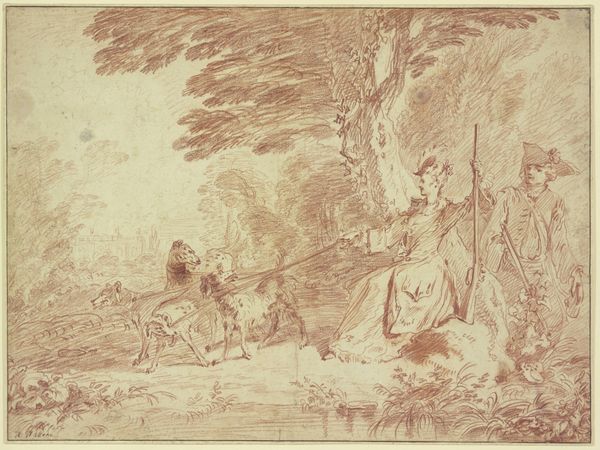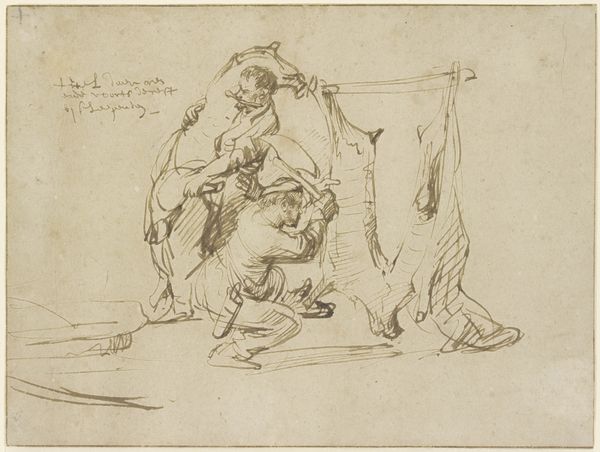
drawing, red-chalk
#
drawing
#
baroque
#
red-chalk
#
landscape
#
figuration
#
14_17th-century
#
watercolor
Copyright: Public Domain
Curator: Looking at this drawing, my immediate impression is one of understated tension, like a narrative about to unfold. Editor: Indeed. This red-chalk drawing is attributed to Claes Moeyaert and titled *Mercure and Argus.* It depicts a scene drawn from classical mythology, and resides at the Städel Museum. Curator: It’s remarkable how much Moeyaert conveys with such simple lines. Mercury, identifiable by his winged helmet, faces Argus. Even with this medium's softness, there's a palpable sense of watchfulness emanating from Argus. It is reinforced by that cow positioned in between. Is that Io? Editor: Yes, Io. You see how Moeyaert encapsulates the layers of the story through symbols: Io as a cow, Argus tasked by Hera to guard her, and Mercury, sent by Zeus to free Io. Argus’ hundred eyes were said to always be watching; an awareness, or perhaps paranoia. How potent. Curator: And Mercury, poised but still. The anticipation is almost unbearable. One wonders about the emotional resonance of divine interventions depicted at a time when religious and political power was so intertwined with everyday life. Zeus' actions and their earthly impacts...Moeyaert encapsulates those conflicts. Editor: The politics are impossible to ignore. Classical mythology provided cover for a critique of contemporary authority, couching challenges in ostensibly 'safe' historical narratives. Argus' constant surveillance becomes, then, an almost premonitory depiction of social control, of who watches whom. Curator: A perpetual question for society. Looking closely at the landscape behind them – simple, sketched suggestions of trees and hills – there's an added layer of timelessness. As if to say, the stage is set for an age-old play. The myth is really never over. Editor: This work serves as a vital bridge between the stories we tell ourselves and how those stories become ingrained within a broader social conscience, or in this instance, perhaps the subconscious. It makes you wonder: What parts of *this* image will survive culturally? What meanings will it suggest? Curator: Exactly. Perhaps we have just started to appreciate how myths will constantly mirror social and individual concerns, which will always affect its cultural survival. Editor: Moeyaert presents not just a scene, but the very essence of enduring conflict and social struggle, etched forever in red chalk.
Comments
No comments
Be the first to comment and join the conversation on the ultimate creative platform.
